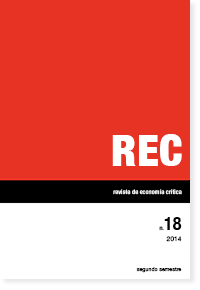"El Capital" de Thomas Piketty. ¿Retorno a los clásicos?
Keywords:
wealth and income distribution, economic growth, Capitalism, political economyAbstract
In Capital in the XXIst Century (2014) Thomas Piketty seeks to unveil the fundamental laws governing the accumulation and distribution of wealth in capitalist economies through history, starting from a robust empirical base and combining a partial analysis of the concentration of hereditary wealth with a general theory of growth and distribution inspired by Solow (1956). Piketty writes in the spirit of the classical political economists to the extent that he brings back distributive issues in historical perspective to the core of economic analysis, emphasizing the asymmetries that can exist between social groups characterised by their distinctive role in the economic system. However, he diverges from the classical economists in some fundamentals aspects and, in particular, in that he starts from an exogenous notion of growth that ultimately determines distributive patterns –whereas for the classical political economists it was the other way around: it is the distribution of output among the social classes, which is conceived as socially and institutionally determined in a specific historical context, that has an impact on growth.







